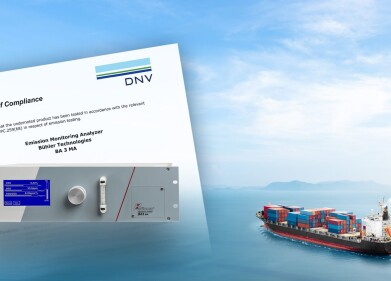Measurement and testing
What is API Gravity Testing?
Sep 05 2022
API gravity, also referred to as density, is one of the most important parameters used to analyse crude oil and petroleum products. The index is used to assess how light or heavy a sample is compared to water. This is important as density can have a big impact on performance and market value. While the index has no official mathematical dimensions, it’s a universally recognised unit of measurement and uses the term ‘degrees’ to assign a gravity rating.
A universally recognised index
The US Energy Information Administration describes API gravity as the “measure of specific gravity of crude oil or condensate in degrees. An arbitrary scale expressing the gravity or density of liquid petroleum products.” The following formula is used to calculate API gravity and calibrate the result in degrees:
Degrees API = (141.5 / sp.gr.60 deg.F/60 deg.F) - 131.5
Depending on the results, petroleum products can be placed in the following API gravity classes:
Extra-light
API gravity of 45 degrees or higher. Crude in this category has shorter molecular chains and is less versatile than its ‘light’ counterparts. Terengganu, a condensate extracted from wells in the South China Sea, is an example of extra-light oil. It contains 80% naphtha and has an API gravity of 73.1 and a sulphur content of 0.00%.
Light
API gravity of 31.1 degrees or higher. Generally, crude oil with API gravity of between 40 and 45 degrees has the highest market value. Brent and West Texas Intermediate (WTI), two industry benchmark crudes, are both classed as light.
Medium
API gravity of between 22.3 and 31.1 degrees. These are the most common types of crude oil and are extracted around the world. Most refineries use distillation methods to separate light hydrocarbons from their heavier counterparts. These can then be refined into lighter products or sold at a discounted price.
Heavy
API gravity of less than 22.3 degrees. This class of oil is highly viscous and difficult to extract from wells and reservoirs. Canada and Venezuela are both known for extracting heavy crude from oil sands deposits.
Extra-heavy
API gravity of less than 10 degrees. Bitumen is a common example of an extra-heavy crude oil with low API gravity.
The role of ASTM
From laboratories to refineries, ASTM methods are used to analyse oil and gas around the world. The ASTM D287 - Standard Test Method for API Gravity of Crude Petroleum and Petroleum Products (Hydrometer Method) is gold-standard technique to calculate the weight of a sample compared to water.
A multi-tiered approach to petroleum analysis
API gravity is one of many parameters used to assess the unique properties of petroleum products. Find out more about other important characteristics, including flash point and boiling range distribution, in ‘Petroleum Testing - A Comprehensive Guide.’ Or check out 'Recent advances in testing the lubricity of diesel fuel' for a more in-depth look at lubricity testing in particular.
Digital Edition
PIN 26.1 Feb/Mar 2025
March 2025
Analytical Instrumentation - Elemental Analysis for Quality and Process Control at Refineries, for Lubricants and Wear Metals in Engine Oils - Synthetic Lubricants: New Developments - Scaling...
View all digital editions
Events
Apr 08 2025 Birmingham, UK
Apr 08 2025 Kielce, Poland
Apr 08 2025 Ravenna, Italy
Apr 08 2025 Southampton, UK
Apr 08 2025 London, UK



















